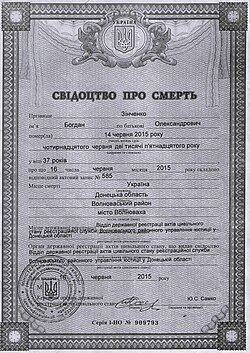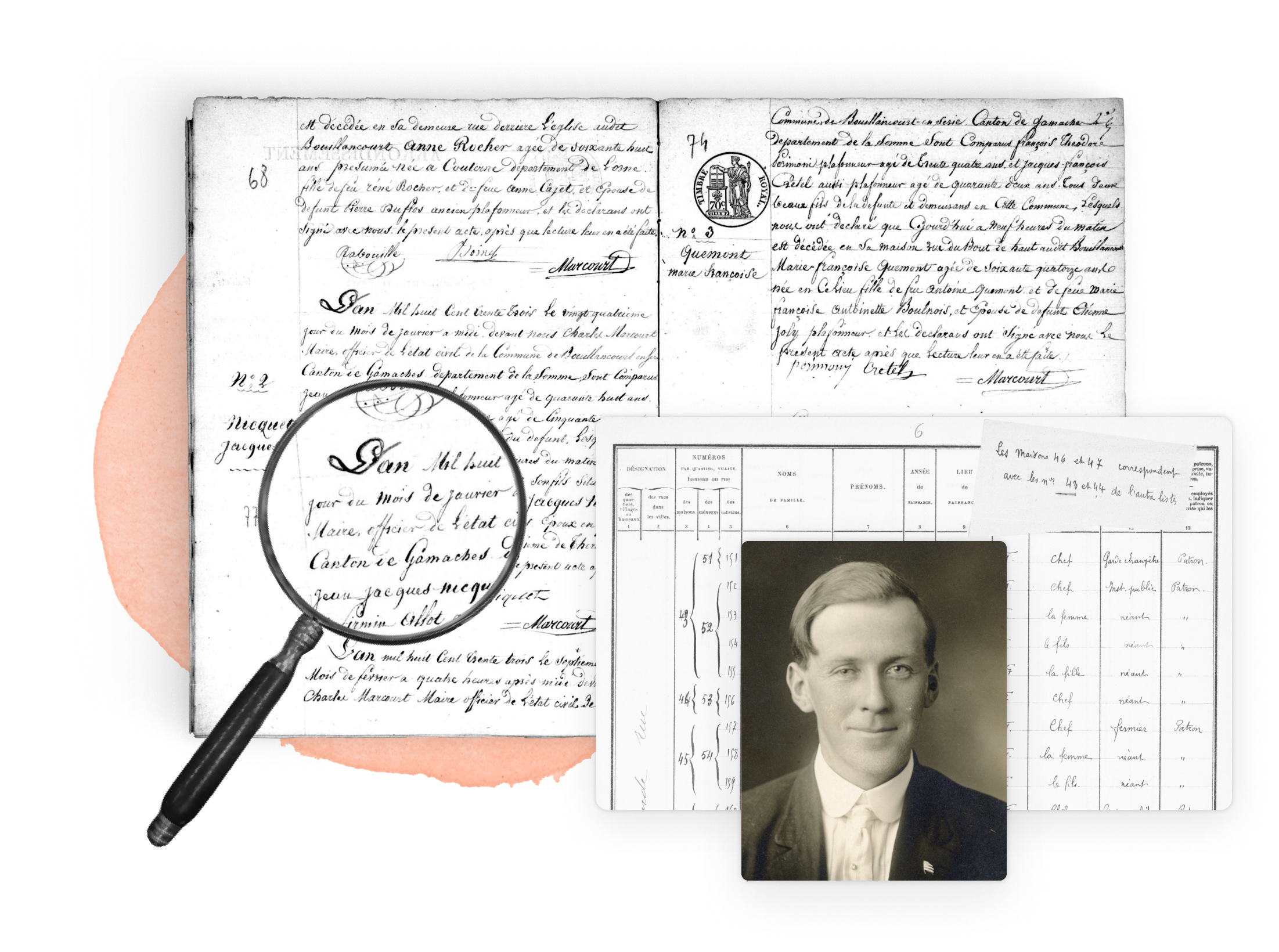In Ukraine, the rich mosaic of vital records spans religious and civil affiliations, capturing the diverse cultural fabric of the nation. Relogious records, known as metrical records, hold the key to unlocking ancestral narratives, detailing names, dates, and familial connections. They are stored across State Archives and Civil Registry Offices, serving as pillars of genealogical exploration.
Research your ancestors on MyHeritage
Types of vital records in Ukraine
Birth Records
Upon a child's birth, it's mandatory to register the event within a specific timeframe at the local civil registration office (RAGS). The parents or legal guardians are responsible for registering the birth. Birth records contain vital details such as the child's name, date and place of birth, parents' names, their residence, and sometimes additional information like occupation. Birth records serve as fundamental legal documents required for various administrative procedures, including obtaining identification documents, accessing education, healthcare, and social services.
Marriage Records
Marriage in Ukraine involves a civil registration process, and records are maintained by the civil registry office. Marriage records contain information about the couple, the date and place of marriage, and particulars of witnesses. These records serve as proof of marriage and are necessary for any official administrative or legal procedures involving the couple.

Divorce Records
Divorces in Ukraine are also registered with the civil registry office. Divorce records contain details about the divorcing spouses, the date and place of divorce, and any additional relevant information. These records act as proof of the legal dissolution of a marriage, required for various administrative purposes.
Death Records
Deaths are recorded at the local civil registry office upon occurrence. Death records encompass details such as the deceased person's name, date and place of death, cause of death, and particulars of the informant. These records are crucial for legal purposes, inheritance, and settling affairs of the deceased.
History of vital records in Ukraine
Pre-Soviet Era
Before the Soviet Union, the territory of modern Ukraine was divided among different empires, including the Russian Empire, Austro-Hungarian Empire, and the Polish-Lithuanian Commonwealth. Each had its own administrative systems for recording vital events such as births, marriages, and deaths. In many cases, vital events were recorded by religious institutions, particularly the Orthodox Church. Church records often served as the primary source of vital information.[1]
Soviet Union Era (20th Century)

With the establishment of the Soviet Union, a standardized system of vital records was introduced across its territories, including Ukraine. The Soviet authorities centralized the registration process, making it a state-controlled function.[1] Civil registry offices were established in each locality, responsible for recording and maintaining vital events of the population. Vital records became an integral part of the state apparatus, providing necessary information for government planning, social services, and administrative purposes.
Post-Soviet Era (1991 - Present)
Ukraine gained independence in 1991 following the dissolution of the Soviet Union. The country underwent administrative reforms, including changes to its vital records system. The civil registration system remained intact, continuing to document births, marriages, divorces, and deaths. Efforts were made to modernize record-keeping methods, introducing digitalization and improving accessibility to records for citizens and administrative bodies. Ukraine has implemented laws governing the registration and maintenance of vital records, ensuring their accuracy and accessibility to the public.
How to find vital records in Ukraine

In contemporary Ukraine, the maintenance and storage of vital records have evolved. Since the Soviet era, civil registry offices have continued to be the custodians of these records. Each civil registration office, located within local administrative districts or municipalities, maintains archives of vital records. These archives house birth certificates, marriage licenses, divorce decrees, and death certificates, documenting the life events of individuals within their respective jurisdictions. Vital records archives are primarily housed within the civil registry offices known as "ZAGS" (ZAGS - Zivilnyi Stan Hromadyanstva, or Civil State Registration Office). Each administrative district or municipality has its own ZAGS office responsible for maintaining and preserving vital records within its jurisdiction.
Additionally, historical archives and state repositories might also store older or historical vital records. These could include regional or national archives, where historical documents, including older birth, marriage, death records, and related administrative records, might be kept for reference, research, or preservation purposes. The specific locations and archives where vital records are kept can vary based on administrative divisions, regional practices, and historical preservation efforts. Civil registry offices (ZAGS) primarily manage current and recent vital records of the last 75 years, while historical archives might store older or archival materials for research and reference purposes.
See also
- Vital records at MyHeritage
- Vital records in Russia at MyHeritage
Search for vital records in Ukraine
Explore more on vital records in Ukraine
- Ukraine, Kyiv Orthodox Consistory Church Book Duplicates, 1840-1845 at MyHeritage
- Ukraine, World War II Casualties at MyHeritage
- Ukraine, Births and Baptisms, 1784-1879 at MyHeritage
References
- ↑ 1.0 1.1 Basilashvili, Maryna Bichikoevna. ГЕНЕЗИС ОРГАНОВ РЕГИСТРАЦИИ. АКТОВ ГРАЖДАНСКОГО СОСТОЯНИЯ: ИСТОРИКО-СРАВНИТЕЛЬНЫЙ АСПЕКТ. Instrument Bibliometric National


